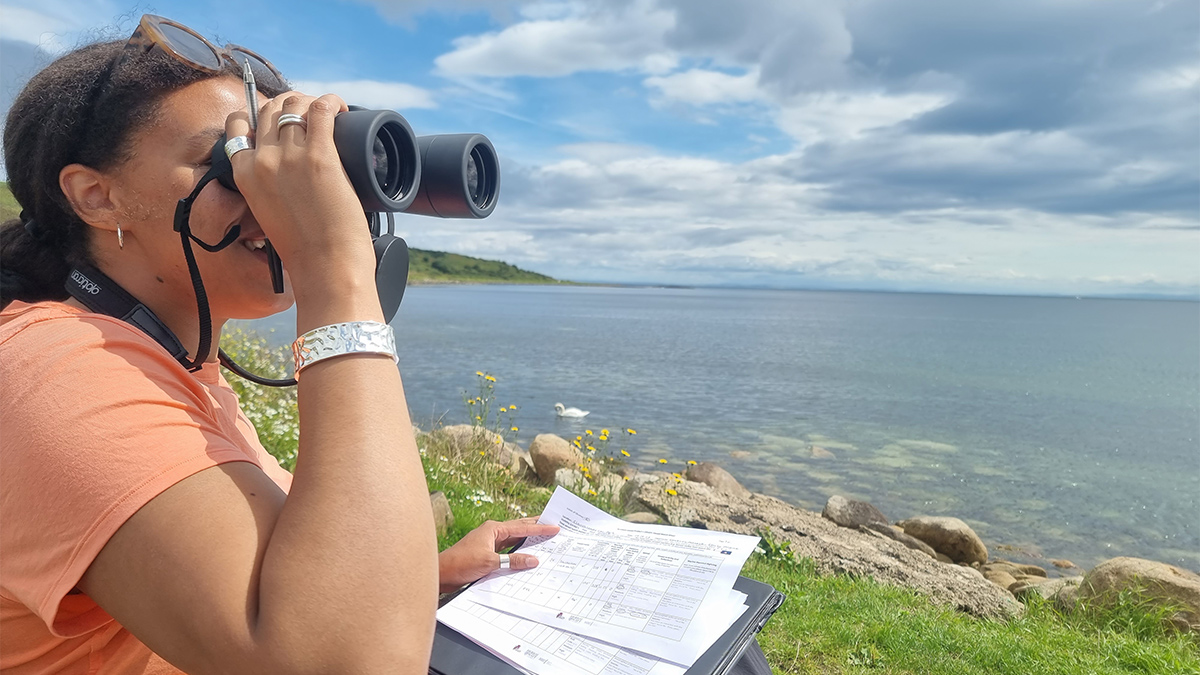Published:

Heriot-Watt scientists are working with the Community of Arran Seabed Trust (COAST) and local volunteers to calculate the true volume of boat traffic in Lamlash Bay.
In the UK, only vessels over 15m long must broadcast their ID, activity, speed and position with an automatic identification system (AIS). It’s therefore easy to track how many larger vessels are coming in and out of the bay, and what they might be doing while they’re there.
Smaller boats, which can account for up to over 70% of all vessels in some areas, are under no obligation to use AIS.
That makes it difficult to estimate the true volume of marine vessel activity along Scotland’s coastlines, including Lamlash Bay.
Heriot-Watt’s Scottish Vessel Project received funding from the Natural Environment Research Council (NERC) and the charity Sea Changers to appoint an undergraduate student to work on the project.
Vessel data company Fleetmon is providing the AIS equipment and hosting the project’s data.
Professor Lauren McWhinnie from Heriot-Watt's Institute of Life and Earth Sciences said: “In collaboration with COAST we’re installing an AIS receiver for Lamlash Bay.
“Combining AIS data with land-based vessel counts will give us a more accurate picture of the number and types of vessels coming in and out of this environmentally-important area.
“Vessel traffic has potentially wide-ranging impacts on marine life. Boats can damage the seabed by anchoring on sensitive habitats such as reefs or impact protected species like seagrass beds that are found in Lamlash Bay’s waters.
“Species like seals and dolphins are also sensitive to disturbance from boats. Their physical presence can cause changes to their behaviour, and the noise they emit can impact sea mammals’ ability to communicate with each other”.
“Many vessel noise estimates are based primarily on AIS data - potentially not including almost 70% of the traffic, and just one of the reasons this work is important”.
“This isn’t to say small boats shouldn’t be using Lamlash Bay. We just need a better understanding of exactly how much activity is happening so we can ensure that we are doing enough to protect the bay.
“It’s also an amazing opportunity to get a better understanding of how we can generate data on vessel traffic in other coastal areas.”
A uniquely-protected marine area
Lamlash Bay is Scotland’s only ‘no take’ zone, meaning no fish, shellfish or other marine life can be taken from the seafloor or shore.
Its status has been in place since 2008, following 13 years of campaigning by islanders, who were appalled by the dramatic decline of fish in the bay since the 1970s. A further campaign by community members resulted in an extension of the existing protection in 2014 to cover 280 km2 of Arran's coastal waters.
The South Arran Marine Protected Area restricts some of the most damaging fishing practices such as scallop dredging and bottom trawling, and protects sensitive habitats such as Flame Shell reefs, maerl beds and seagrass.
Sophie Plant from COAST said: “Lamlash Bay is home to some amazing marine life, including lobsters, scallops, seals, dolphins and one of the largest maerl beds in Scotland.
“Since the No Take Zone was established almost 15 years ago, researchers have seen significant increases in biodiversity and marine life density has more than doubled. These benefits extend to commercial species such as lobsters and scallops whose size, age and abundance are significantly better.
“The lack of fishing in the area has allowed it to begin to recover, providing more complex habitats that provide nursery grounds for juvenile fish and benefitting the wider marine environment.
“As a community-led organization since its inception, COAST champions research that gets citizen scientists involved in gathering data on our seas.
“This project with Heriot-Watt will allow Arran residents to understand boat activity in Lamlash Bay better so we can continue to work together as a community to protect the unique marine life of the area for many years to come.”
Valuable work experience
The project is funded by charity Sea Changers and the NERC Research Experience Placements, through the SUPER CDT, which offer paid summer placements to undergraduates so they can gain valuable skills and hands-on experience.
The work in Arran is just one part of the research undertaken by the Scottish Vessel Project, which is gathering information on the presence, distribution and type of vessels around coastal Scotland.